How to care for a money tree — 7 tips for thriving indoor plants
The experts share top advice on how to care for a money tree


Wondering how to care for a money tree? This guide has you covered. Also known as Pachira aquatica, these indoor plants have gorgeous, glossy foliage, and looking after them is easy with the right know-how.
We chatted with houseplant experts to get the lowdown on exactly what money trees need to thrive. Below, they share their practical insights on all the essentials – from watering and soil type to pest control.
Stick to the following advice and your new leafy pal may become the best indoor plant in your collection.
How to care for a money tree indoors, according to houseplant experts
Money trees can grow pretty tall — we're talking around six feet — making an impressive statement in the corner of a room.
However, as Amy Enfield, senior horticulturist at ScottsMiracle-Gro, points out, they can also be found as a bonsai-like tree with a single thickened trunk that is allowed to branch. These types are ideal houseplants for small spaces.
1. Choose well-draining soil
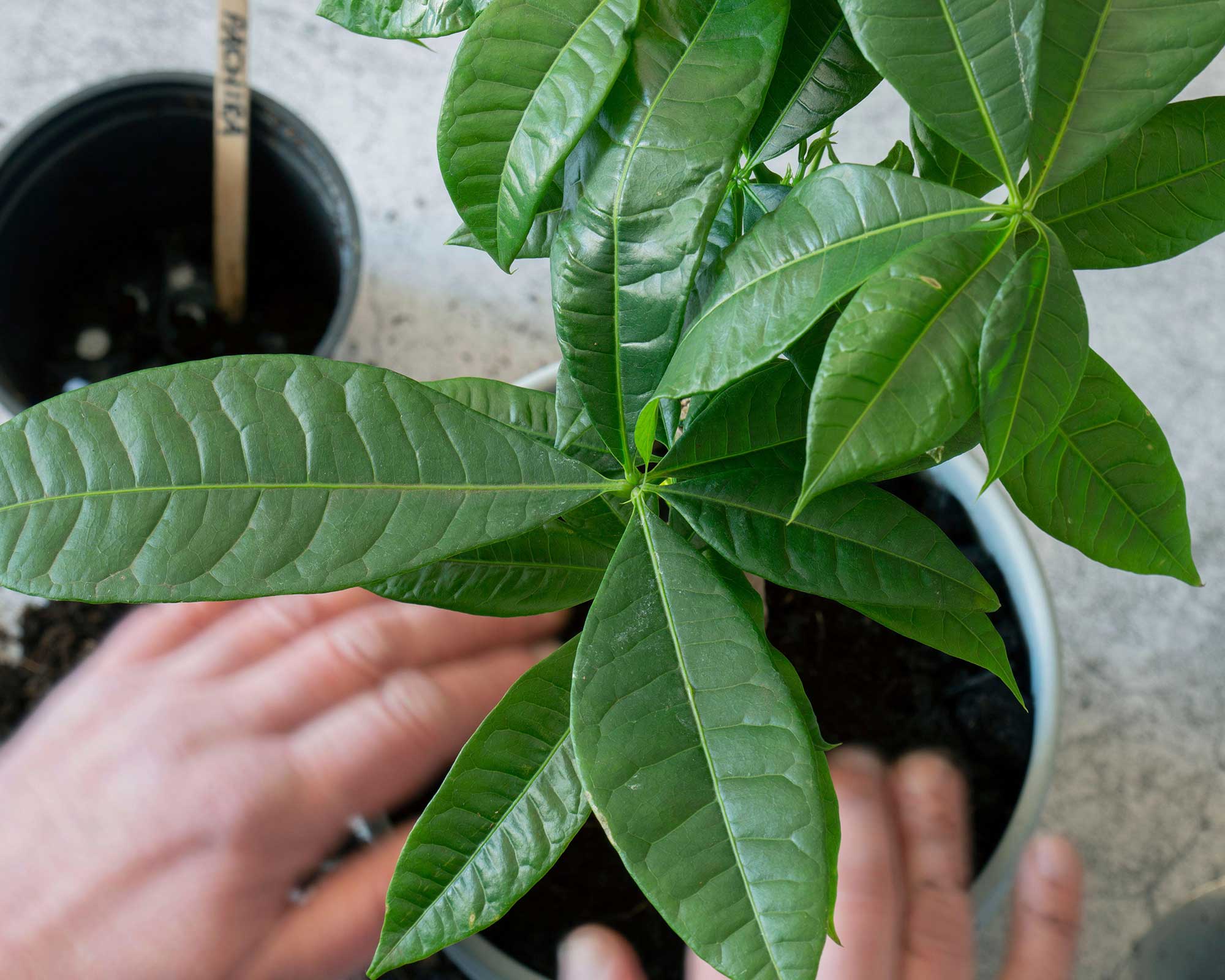
Kiersten Rankel, a plant expert from Greg, says, "Money trees love a soil blend that holds moisture but doesn't get waterlogged — a good potting mix with some perlite or sand for drainage will keep them super happy."
The money tree potting mix from Perfect Plants Nursery at Amazon has just under 500 5-star ratings and includes perlite and sand, as well as pine bark to help balance pH levels.
Get small space home decor ideas, celeb inspiration, DIY tips and more, straight to your inbox!
You could also use a mix designed for succulents or cacti, says Kayla Gajdascz, the owner of Mental Houseplants. We like the look of this Miracle-Gro® succulent potting mix from Amazon, which would also be suitable for growing jade plants.

Kiersten Rankel is a certified Louisiana Master Naturalist and regularly volunteers with local community gardens and nonprofits to help restore critical ecosystems along the Gulf Coast. In her spare time, she enjoys tending to her 150+ houseplants and vegetable garden.
2. Water sparingly
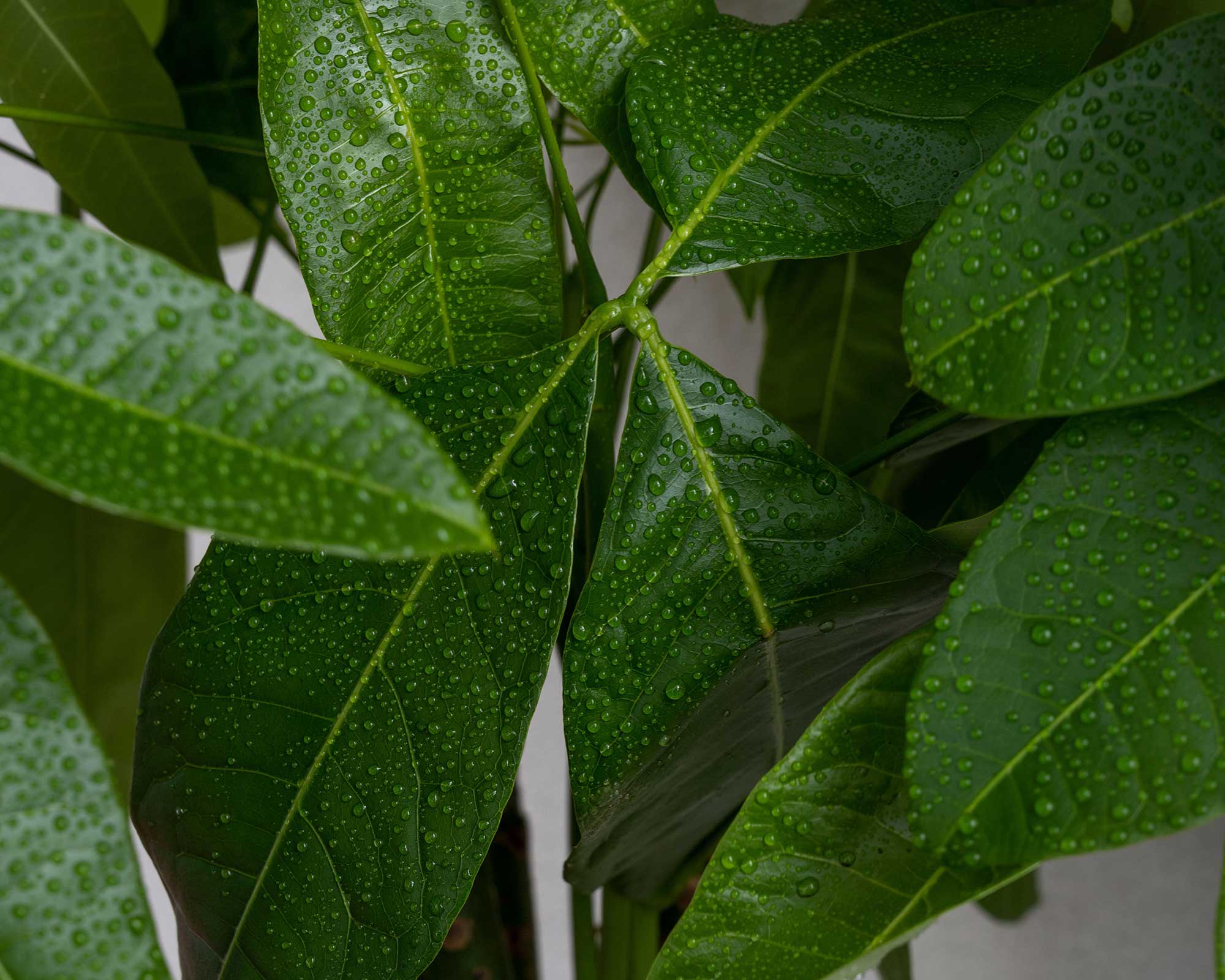
Correct watering is crucial when learning how to care for a money tree. Like when caring for fiddle leaf figs, you should avoid watering too regularly.
Kayla recommends doing so when the top 2–4 inches of soil become dry. "Over-watering is a common mistake; it's better to err on the side of underwatering," she says. "Typically, watering every two weeks is sufficient, but this can vary based on environmental conditions."
Use water that's at room temperature, she advises – this will avoid shocking the plant's roots. "Ensure thorough watering, allowing excess water to drain out of the pot's bottom."
Need a tool for the job? This pink glass watering can from Terrain is super cute.
3. Provide indirect sunlight
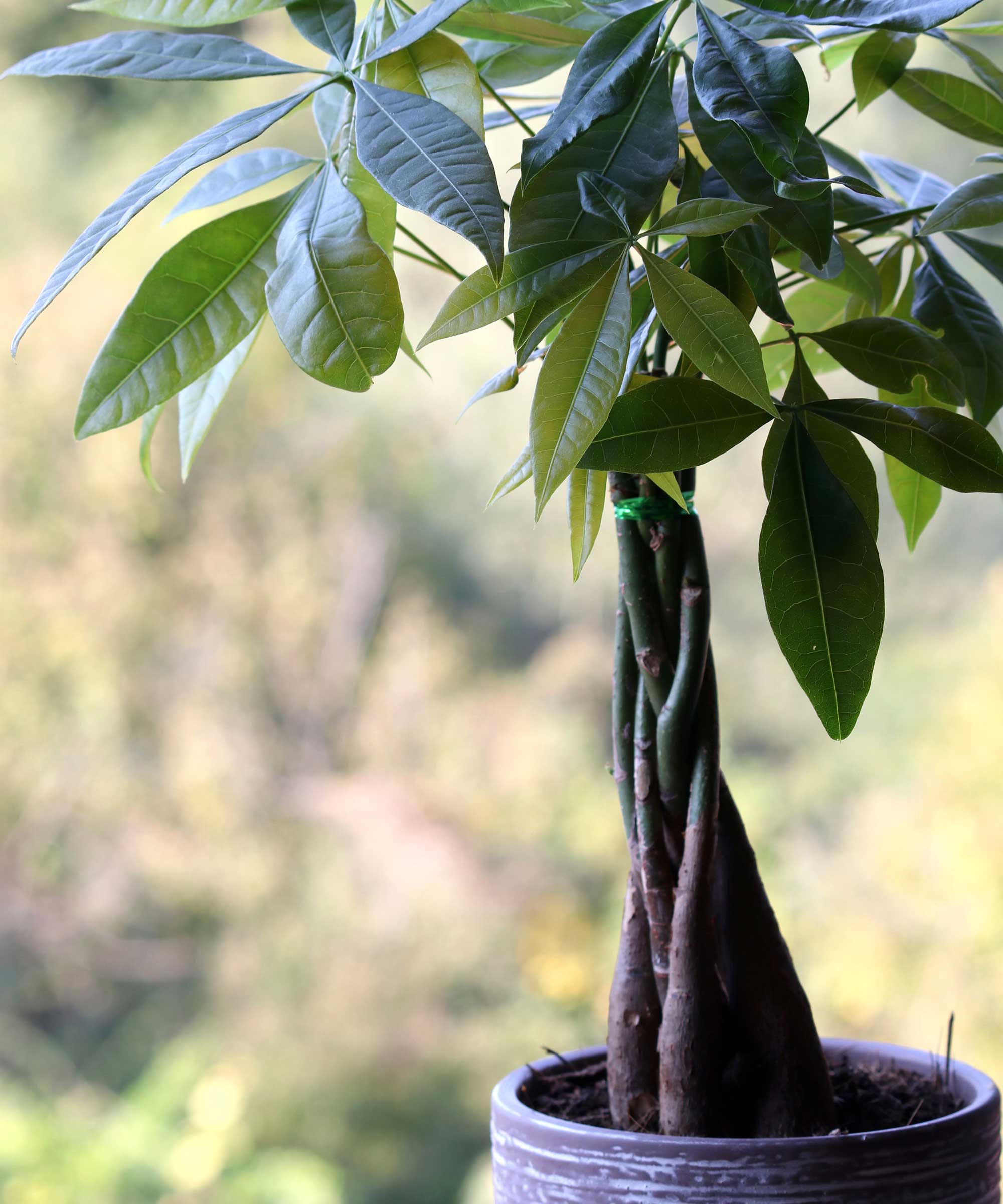
Kiersten says, "Bright, indirect light is the sweet spot for money trees. Too much direct sun can scorch their leaves, so a spot near an east or west-facing window is perfect."
Vladan Nikolic (Mr. Houseplant) says to rotate the plant regularly to get an even light distribution and keep it upright. "If you don’t rotate the plant, it will lean on one side, trying to catch more light," he warns.
You'll need to cater to similar requirements when caring for Chinese money plants, too.
If you don't have a suitably bright spot available, don't worry. These houseplants also grow quite well under artificial lights, as Amy points out.
These well-rated grow lights from Amazon could come in handy for helping your money tree thrive.
You needn't worry about four-legged friends around your money tree, either. As Amy notes, these are pet-friendly houseplants.

Vladan Nikolic, otherwise known as Mr. Houseplant, is a houseplant expert with over 10 years of experience. He is the founder of the houseplant care blog MrHouseplant.com and also an influencer who helps newcomers in the houseplant world become great plant parents. You can find him on Instagram, TikTok, YouTube, Facebook, Twitter and Pinterest.
4. Avoid extreme temperatures
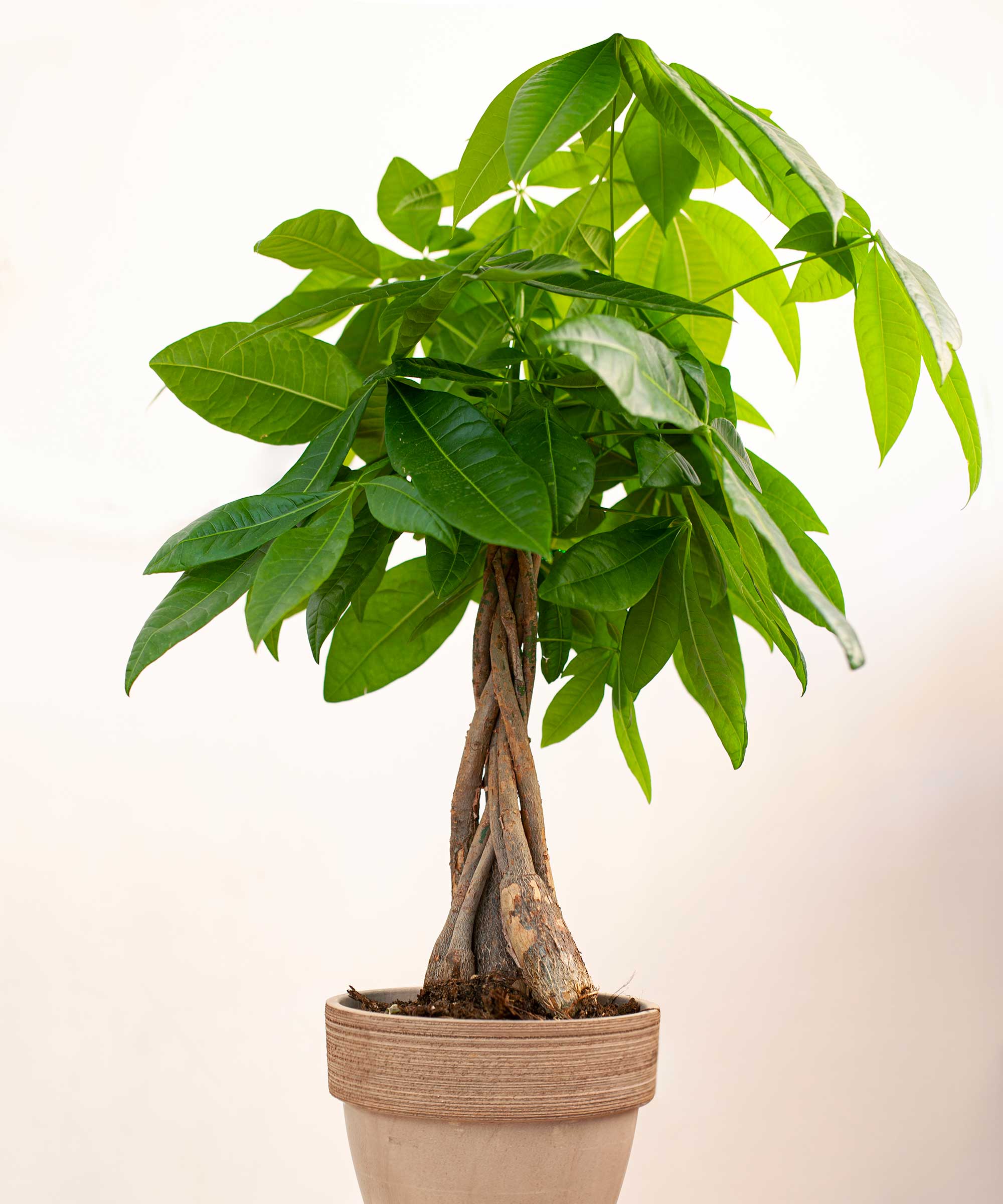
Kiersten says money trees are pretty flexible on temperature, thriving anywhere between 60–80° Fahrenheit.
However, Paris Lalicata, a houseplant expert from The Sill, says, "The warmer the environment, the faster the plant will grow."
If you need a way to ensure conditions are optimal, consider buying this clever Bluetooth thermometer, available from Amazon.
Kayla adds, "Avoid placing your money tree near drafts, heating vents, or air conditioning units, as drastic temperature changes can stress the plant." This is important to remember when learning how not to kill houseplants.
5. Fertilize when growing

"No need to go overboard with fertilizer," says Kiersten. "A balanced liquid feed once a month during spring and summer will fuel plenty of growth.
"Avoid feeding in winter when growth naturally slows," she adds.
Amy suggests using the Miracle-Gro® Indoor Plant Food (available from Amazon), and following label directions. This can be used when caring for all houseplants, to give them a boost.
6. Prune when needed
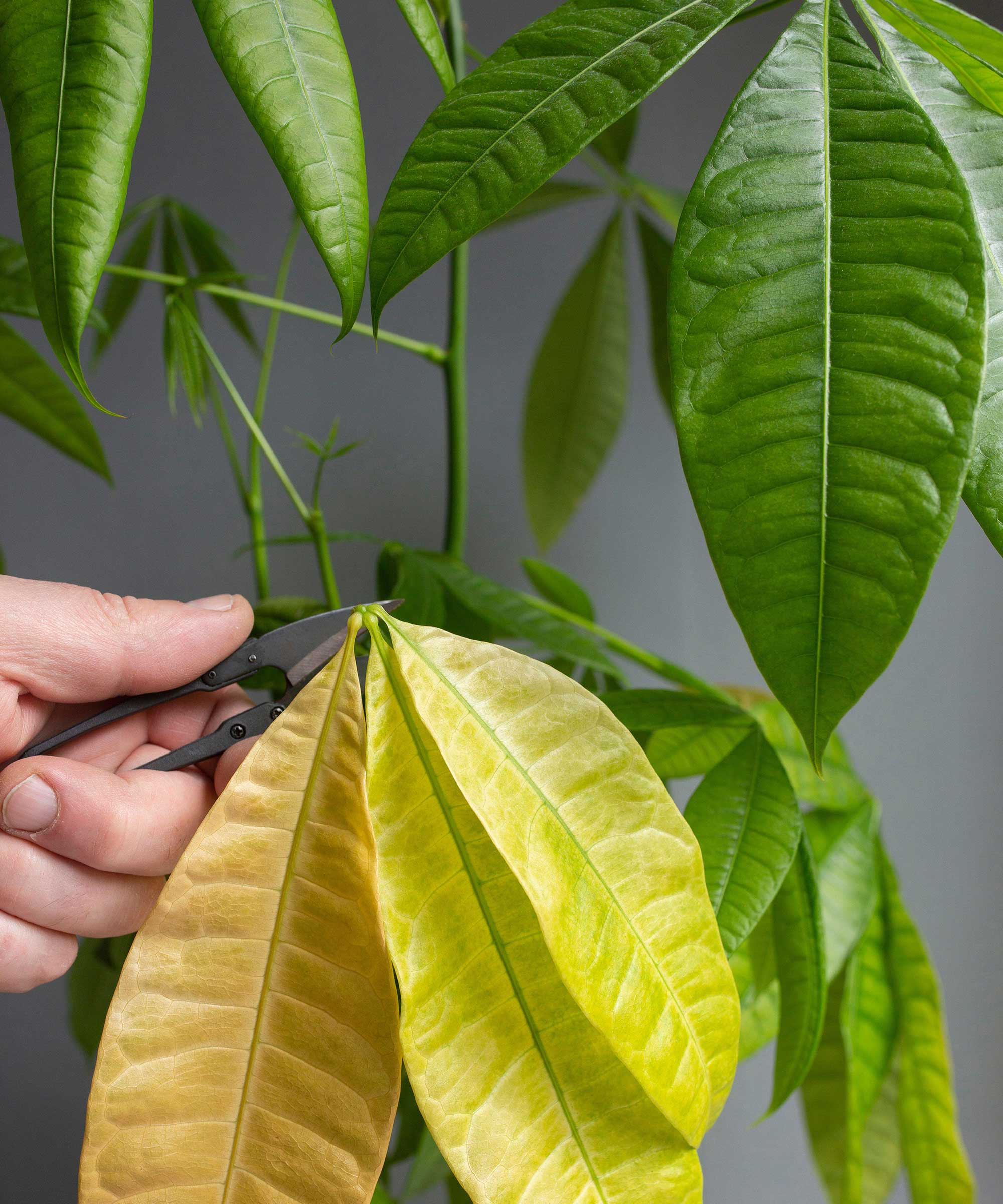
Learning how to care for a money tree includes giving it a tidy-up now and again.
You can prune your money tree if it gets a bit unruly, says Kiersten. "Just snip off any wild branches to maintain a nice shape."
It's best to do this in the spring, says Vladan. "Cut half an inch above a node or leaf," he instructs. "New growth will appear from the leaf nodes below the cut."
Dead or yellowing leaves can be removed at any time, says Kayla.
Vladan recommends using sharp and sterilized shears. We like the look of these Corona bypass pruners, from Amazon, which feature a non-slip grip. They're perfect for tidying up peace lilies, too, if needs be.
7. Treat pests quickly
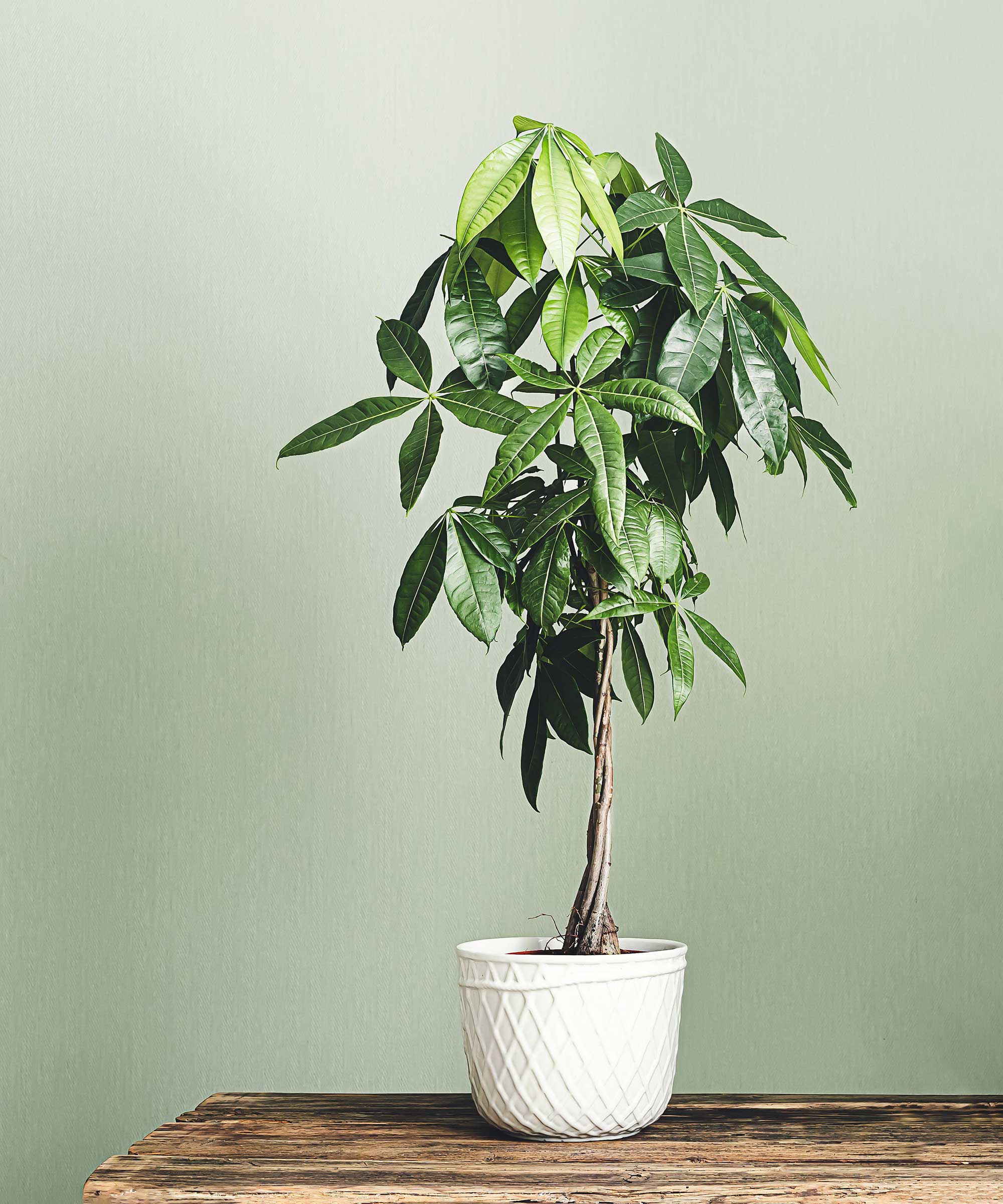
It's worth knowing how to identify houseplant pests, so you can treat them before they get out of hand.
Kiersten says, "Pests like mealybugs and aphids sometimes pop up, so keep an eye out for any unusual specks or stickiness on the leaves. If you do spot any intruders, a quick spray with insecticidal soap usually does the trick."
You can also use a neem oil spray to tackle them, such as Natria's ready-to-use solution available from Amazon.
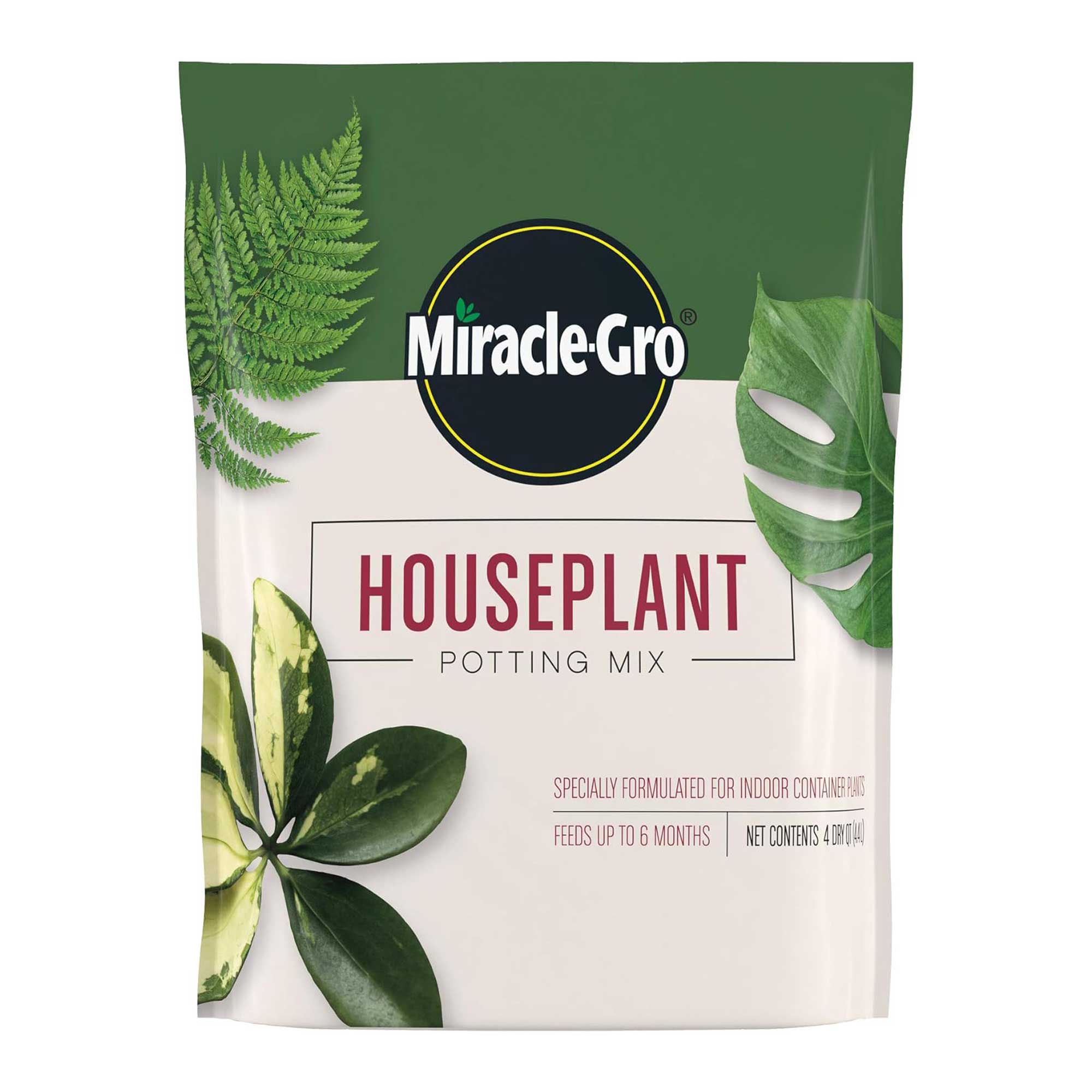
Price: $13.33
With over 11,000 5-star ratings, this mix from Miracle-Gro® is specifically formulated to help houseplants thrive.
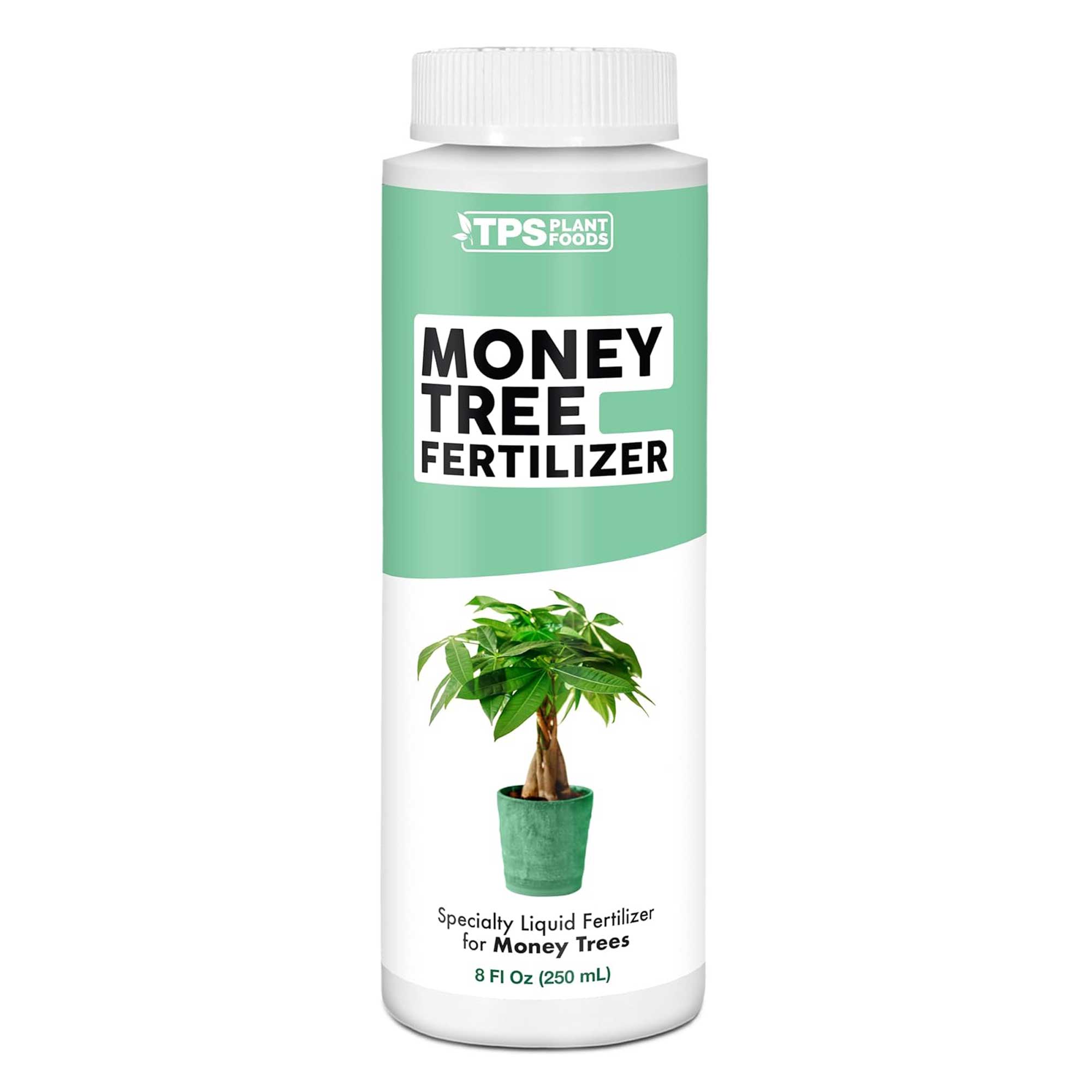
Price: $9.99
This liquid fertilizer from TPS Nutrients will help keep your money tree looking its best. Plus, it's super easy to use.
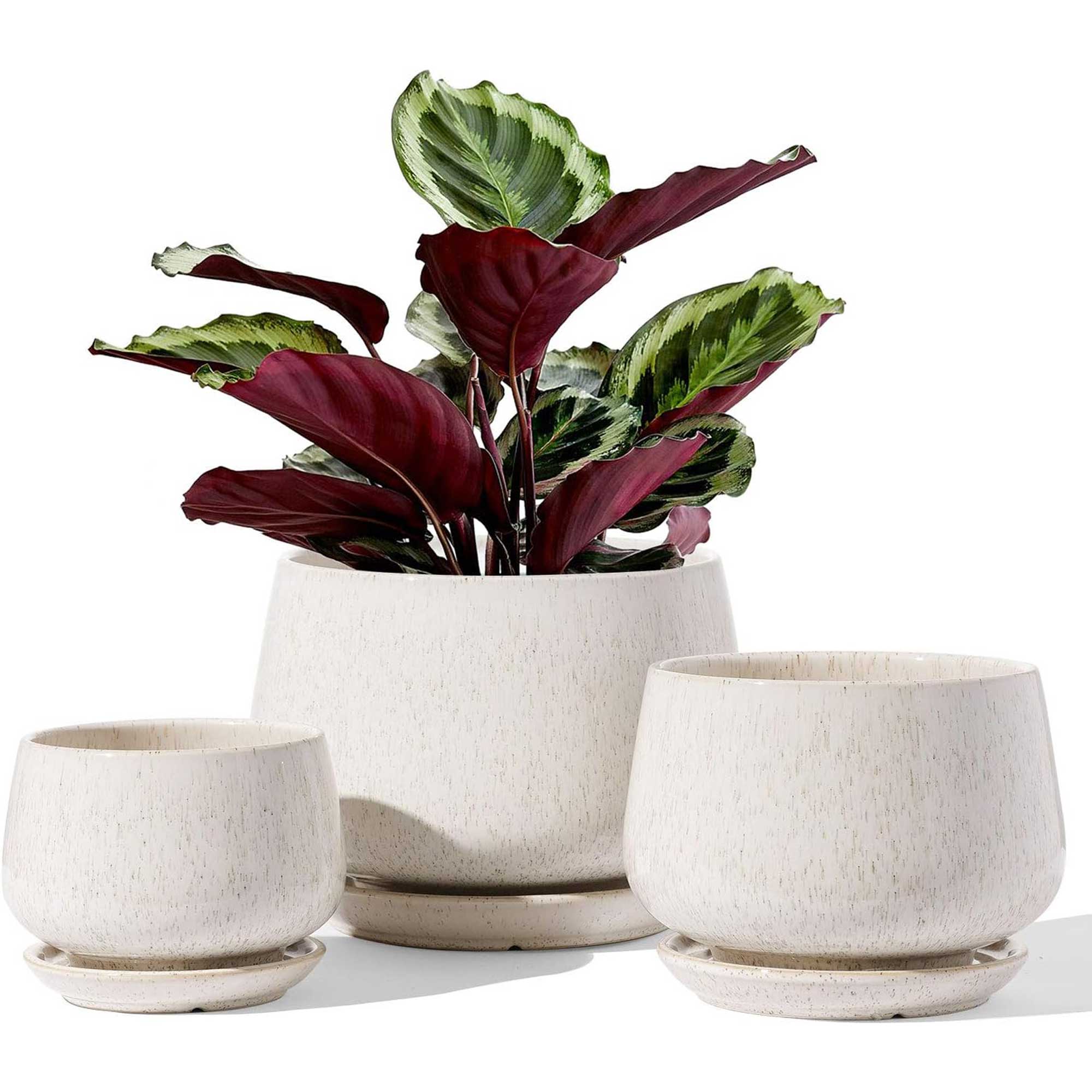
Price: $32.99
Update your indoor garden with these planters from Le Tauci. Each one includes a matching saucer and drainage hole.
FAQs
Should you mist a money tree?
According to Kiersten, you should aim to keep humidity levels at around 50% to prevent the edges of your money tree's leaves from turning crispy.
However, Paris recommends avoiding misting the plants' foliage, as this can increase the chances of scarring and infections. Instead, you could use a pebble tray filled with water or a humidifier, as Kayla suggests.
This Levoit humidifier from Amazon is a popular pick, and will benefit nearby lucky bamboo plants, too.
If you're not sure of the humidity levels in your space, Paris recommends this humidity meter from The Sill, which also measures light and temperature.
Should you clean the leaves of your money tree?
According to Kayla, wiping the leaves with a damp cloth periodically will remove dust and help the plant photosynthesize efficiently.
"You may also choose to occasionally water the plant in the shower, giving you the opportunity to rinse dirt and dust buildup on the leaves," she says. This also allows you to inspect for pests and diseases, she adds.
How do you maintain a money tree's braided trunk?
If you've bought a money tree with a braided trunk, it's possible to maintain it as it grows. Amy says, "You will have to occasionally continue the braid by gently weaving the trunks together and then loosely tying it around the top with a piece of string."
Looking for more easy houseplants to give your home a beautifully botanical vibe? Consider caring for spider plants, which are low-maintenance and simple to propagate, too.

The garden was always a big part of Holly's life growing up, as was the surrounding New Forest, UK, where she lived. Her appreciation for the great outdoors has only grown since then; over the years, she's been an allotment keeper, a professional gardener, and a botanical illustrator. Having worked for Gardeningetc.com for two years, Holly now regularly writes about plants and outdoor living for Homes & Gardens.
In her spare time, Holly loves visiting local English gardens and is particularly fond of relaxed cottage-garden schemes. She also loves prairie-style planting – the tapestry effect of grasses mixed with drought-tolerant blooms never ceases to delight her. Always happiest around plants, when she isn't swooning over gardens, she's looking after her ever-growing collection of houseplants and arranging seasonal flowers in her apartment to paint.


